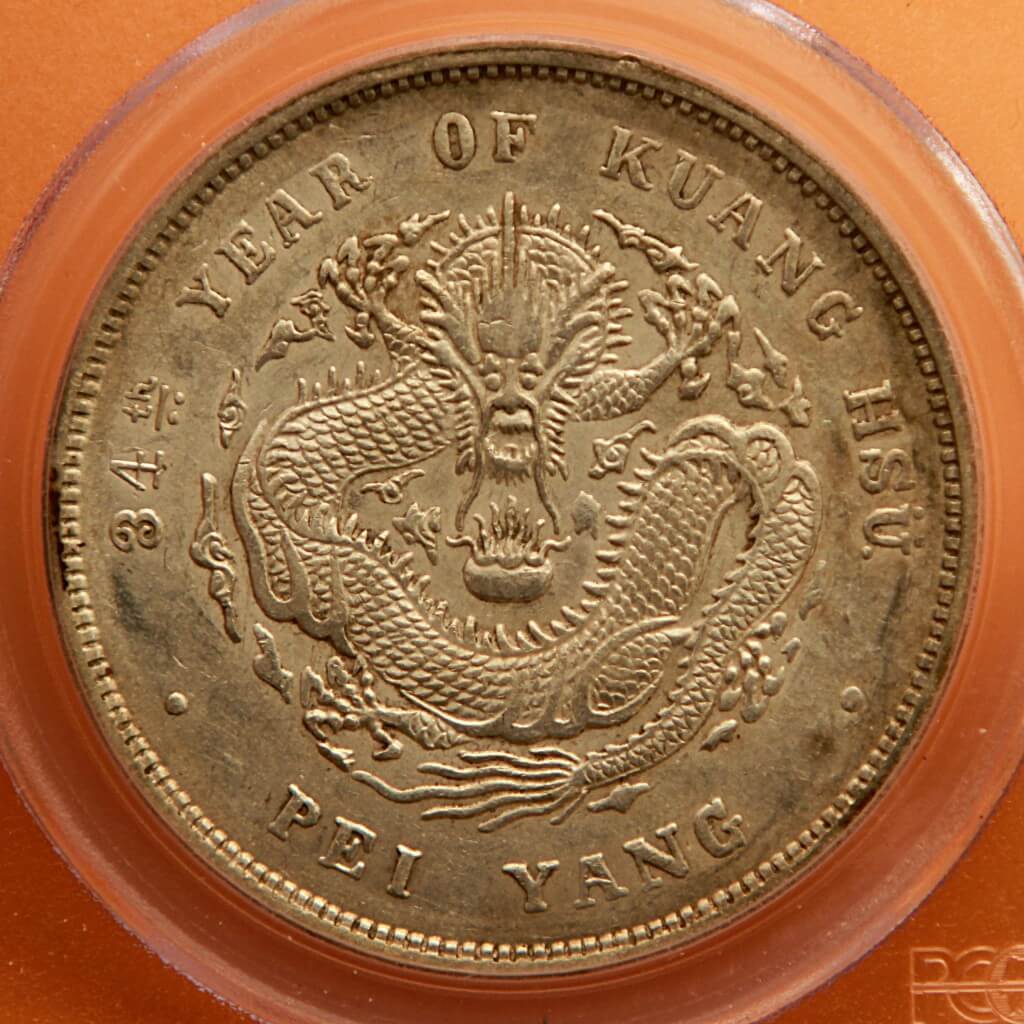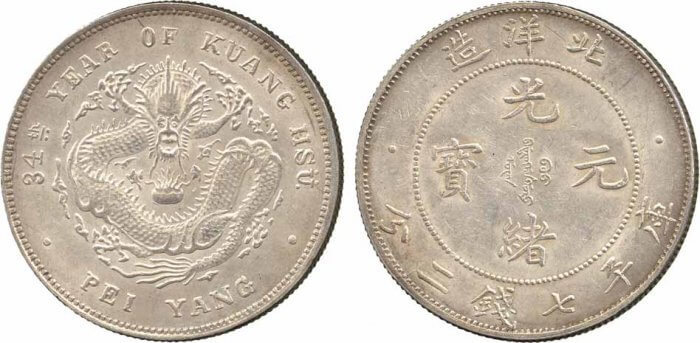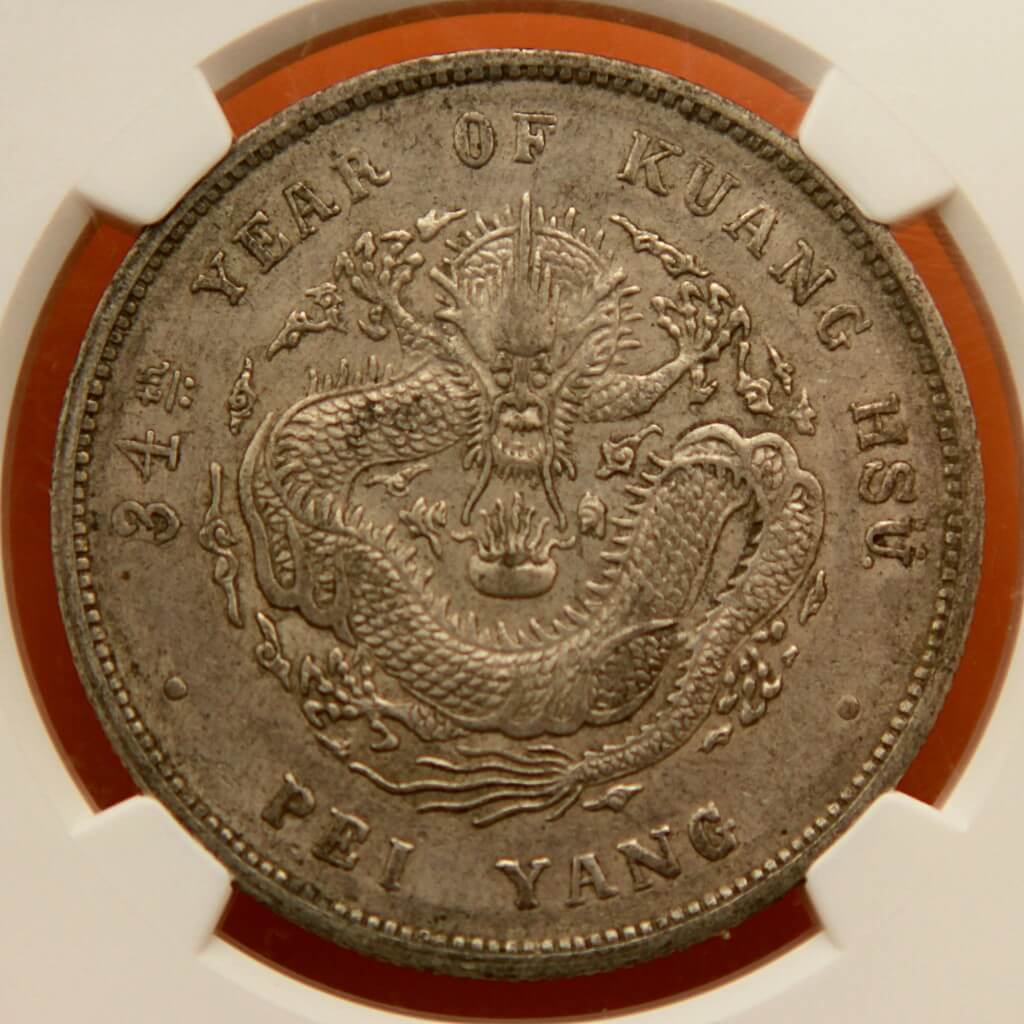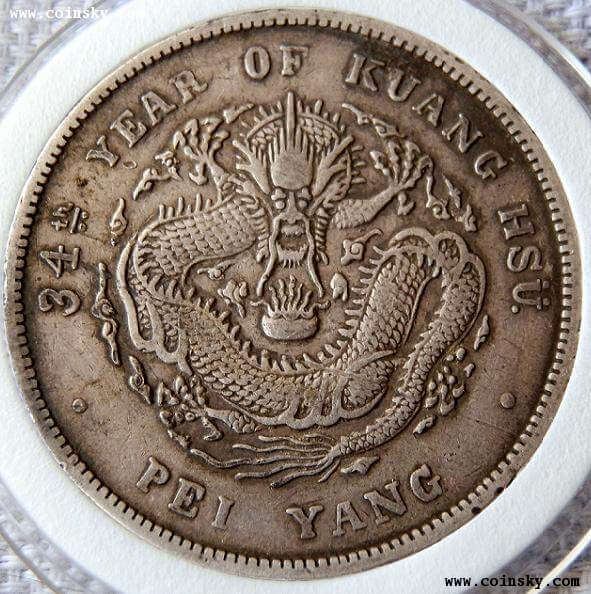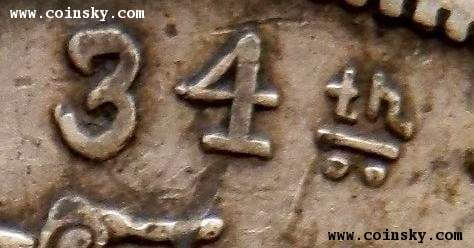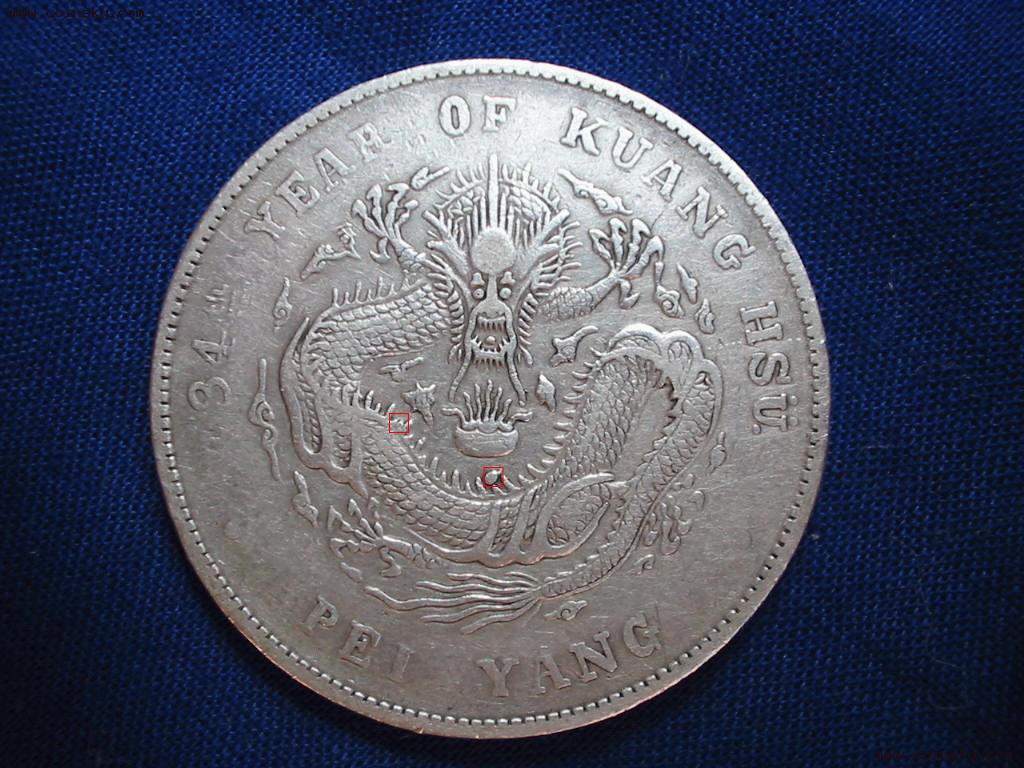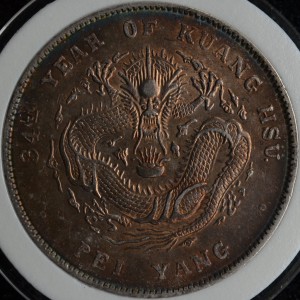Most of you likely have or have seen a 1908 Chihli dollar. It is one of the most commonly seen Chinese silver coins due to its relatively high mintage, it is also one of the most affordable, and it is therefore many a collector’s “first dollar”.
The famous dragon with its wide, crocodilian grin and delicate scales has more to offer to the devoted collector than it appears: while the Y73.2 type that everyone knows is abundant, the varieties currently filed by default under the Y73.4 catalog number are both excitingly rare and hard to find in good condition. There is also scant literature about them in English.
Advanced collectors will already know about the “crosslet 4″ or “fancy 3″ varieties that sometimes appear in auctions, but these labels currently conflate merely scarce varieties with extremely rare ones. For example, the coin below, labelled as “Fancy 3″ is actually called 北洋肥3 in China (“Pudgy 3″ in English):
This very rare variety in AU condition is worth ¥60,000 yuan Renminbi, almost $10,000 USD. This is an order of magnitude more than common “Fancy 3″ varieties, like this coin sold at Baldwin’s Hong Kong auction 48 in 2010:
Even holders labeled as Y73.2 can be full of surprises. Consider this coin from my collection, which I bought in an NGC holder with the grade AU55. An oblivious collector might dismiss it as banal, while it is actually the best known specimen of the extremely rare 丑3 variety (literaly “ugly 3″ in Chinese) and is worth north of ¥80,000 yuan Renminbi ($13,000 USD).
This variety is the rarest of the whole 34th year of Kuang Hsu series, with only a dozen of coins found across China. It is the missing link between the early “Fancy 3″/”Cross 4″ Y73.4 varieties, which use a typeface similar to the 33th year of Kuang Hsu, and the classic Y73.2 typeface. As awareness of this historically significant variety grew amongst Chinese collectors, an even rarer subtype was discovered last year:
Only a few coins with this flatter 3 have been discovered, all in VF conditions. So, dear readers, keep your eyes peeled and do not look down upon common types. Like in the story of the Ugly Duckling, appearances are often misleading: the Homely 3 which had been handled as a banal Y73.2 Chihli dollar has already risen to the rank of numismatic star.
I have been to Chengdu in December and made a detour by the local coins market during my stay there. The 1908 Chihli dollar is a very common coin, but one specimen I saw there caught my attention, for it had a very uncommon feature: a huge dot just above the back of the dragon.
Since the coin did not look like a forgery, I bought it for the regular market price of the time, about¥2000 CNY. As soon as I went back to the hotel, I started looking for information about this peculiar variety online. Despite scouring many online boards and obscure blogs, I could not find any information about it. I was only able to find a single picture of a coin just like the one I had just purchased, but it was not taken to illustrate the variety: simply for sale.
I highlighted the differences in red on this picture. One could be tempted to argue that the big dot is the result of some problem with the die or minting process, but looking at the details of the back of the dragon, there is a second, more subtle difference. There is another dot between two spines of its dorsal crest. Here is a regular 1908 Peiyang dollar, for comparison (click on the picture to enlarge it):
When I went back to Beijing, I showed my coin to several of my coin dealer friends. All of them confirmed it was indeed genuine, but only one of them had encountered this variety before. He had seen two such coins in his career, but did not knew anything about the history behind this strange variation.
My theory is that since at least four coins exist with the exact same differences, including the smaller dot between the spines, proves it is not the result of a freak minting incident but a bona fide variety. I sent my own coin to NGC this month, and I hope getting my specimen slabbed will be a first step toward recognition of this very scarce variety!
